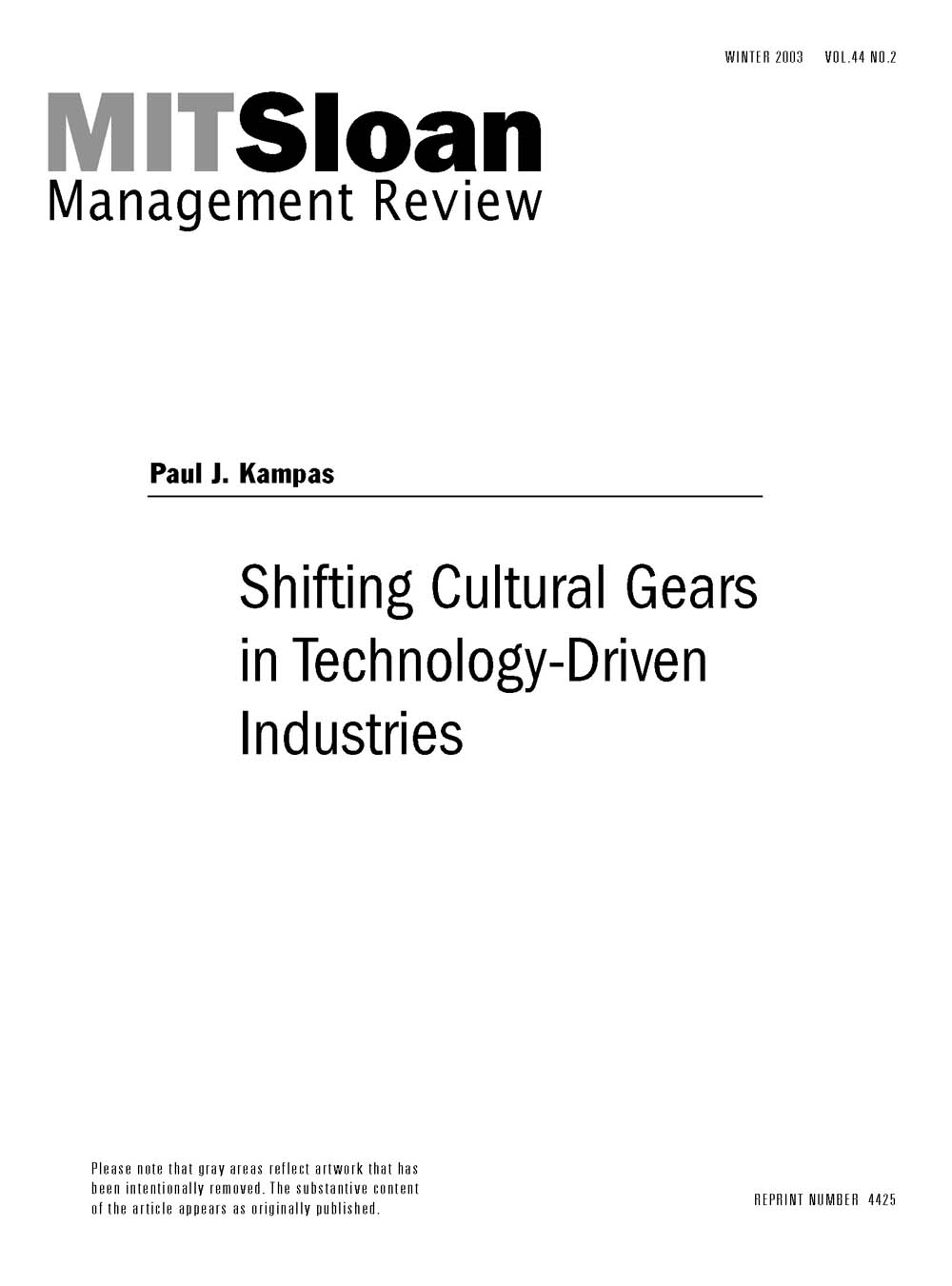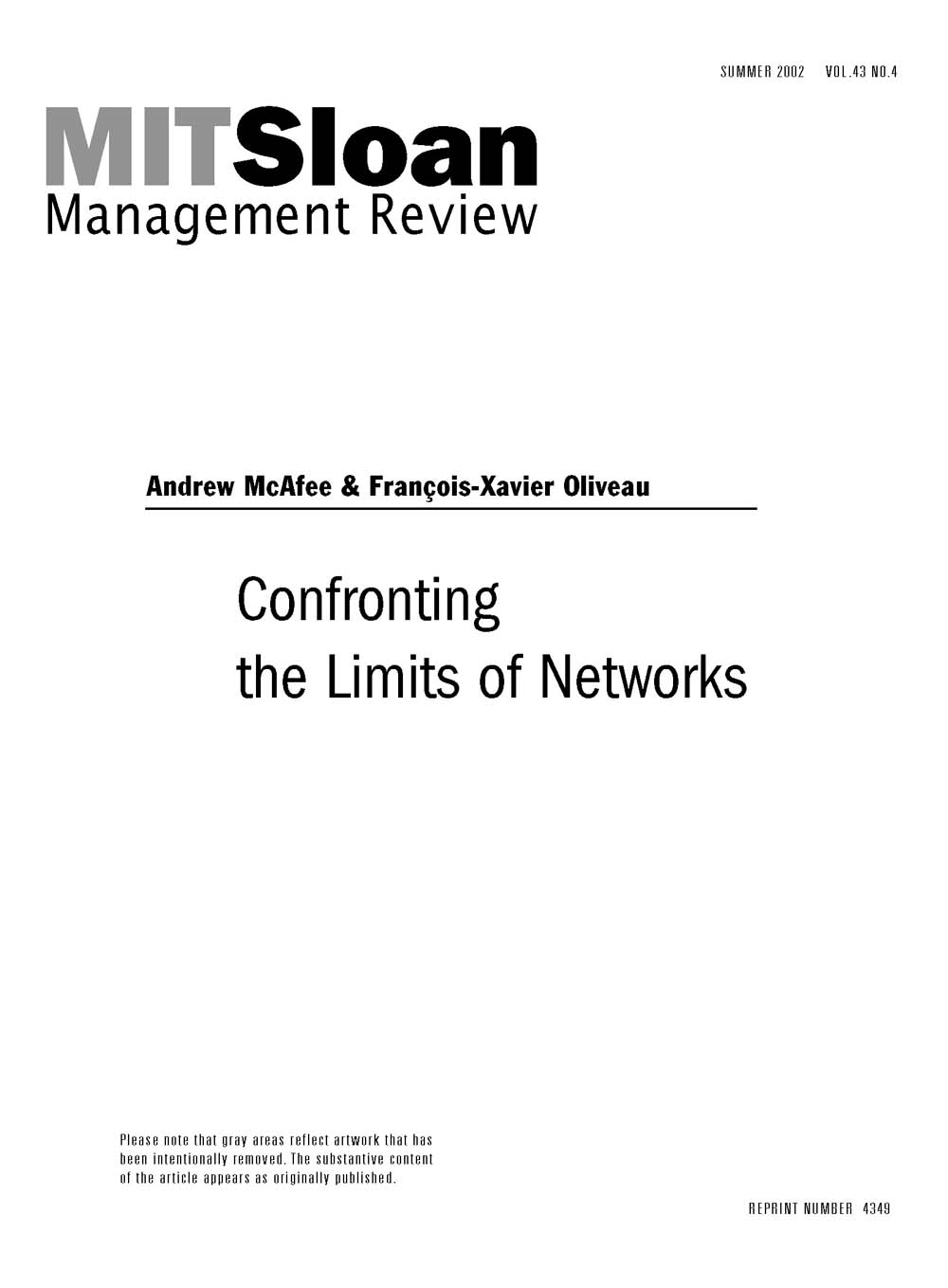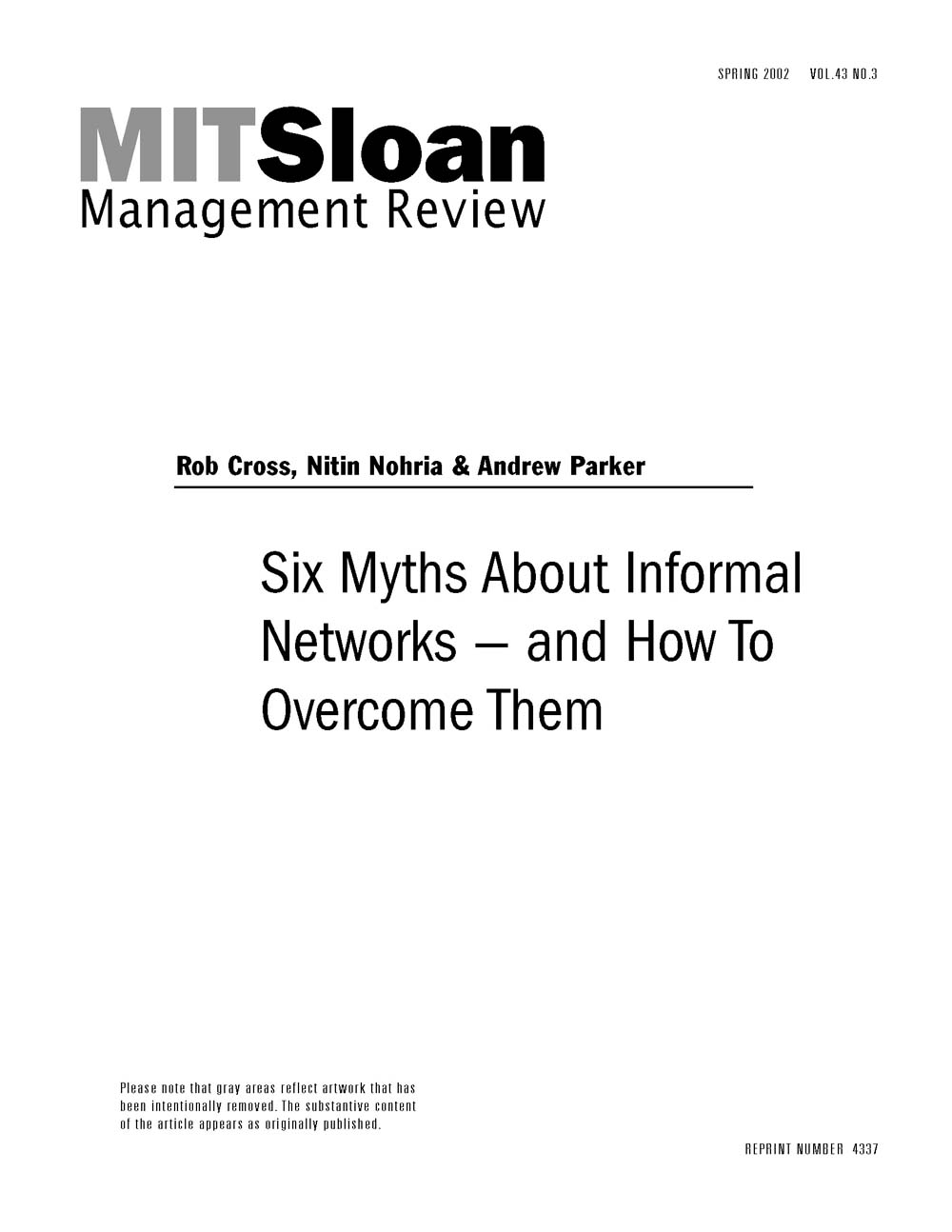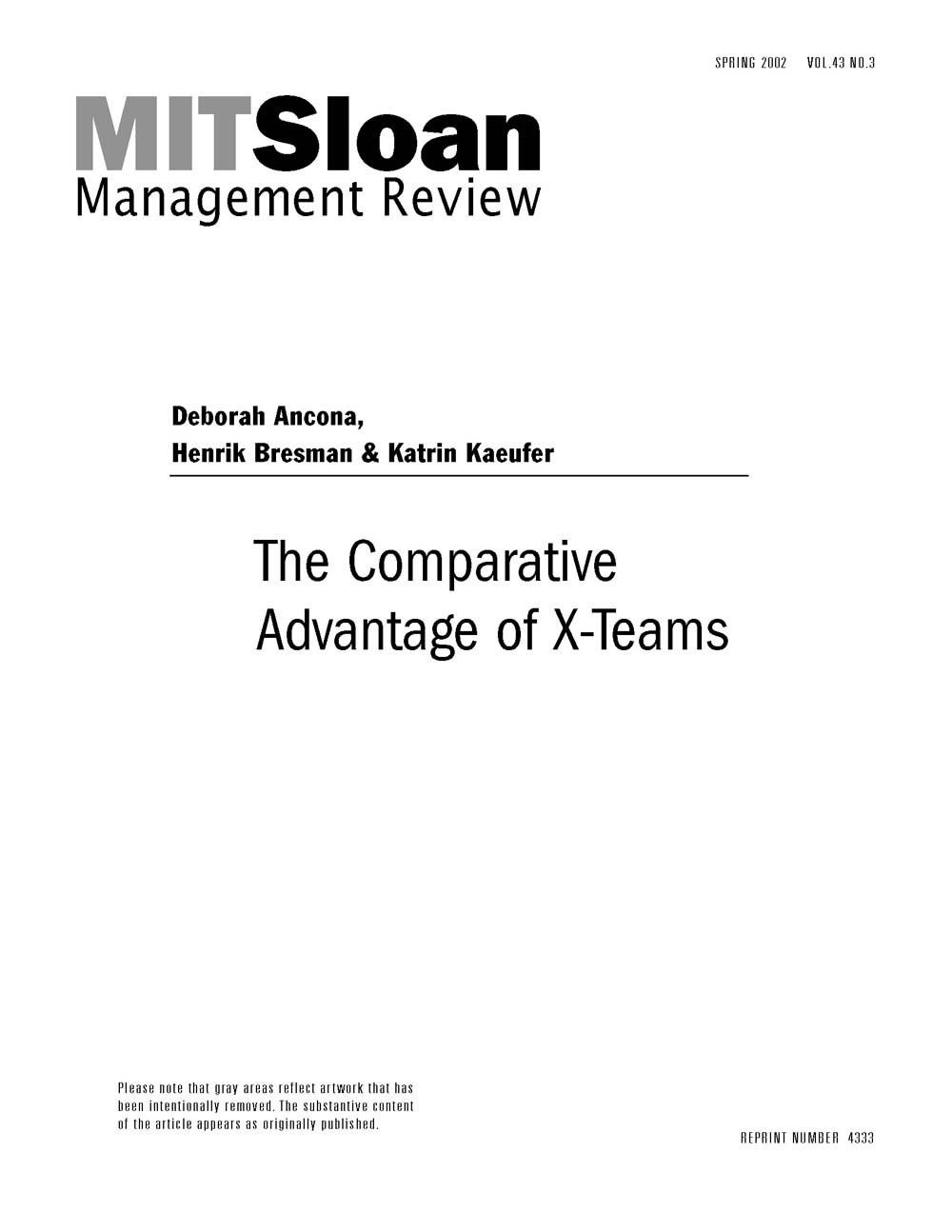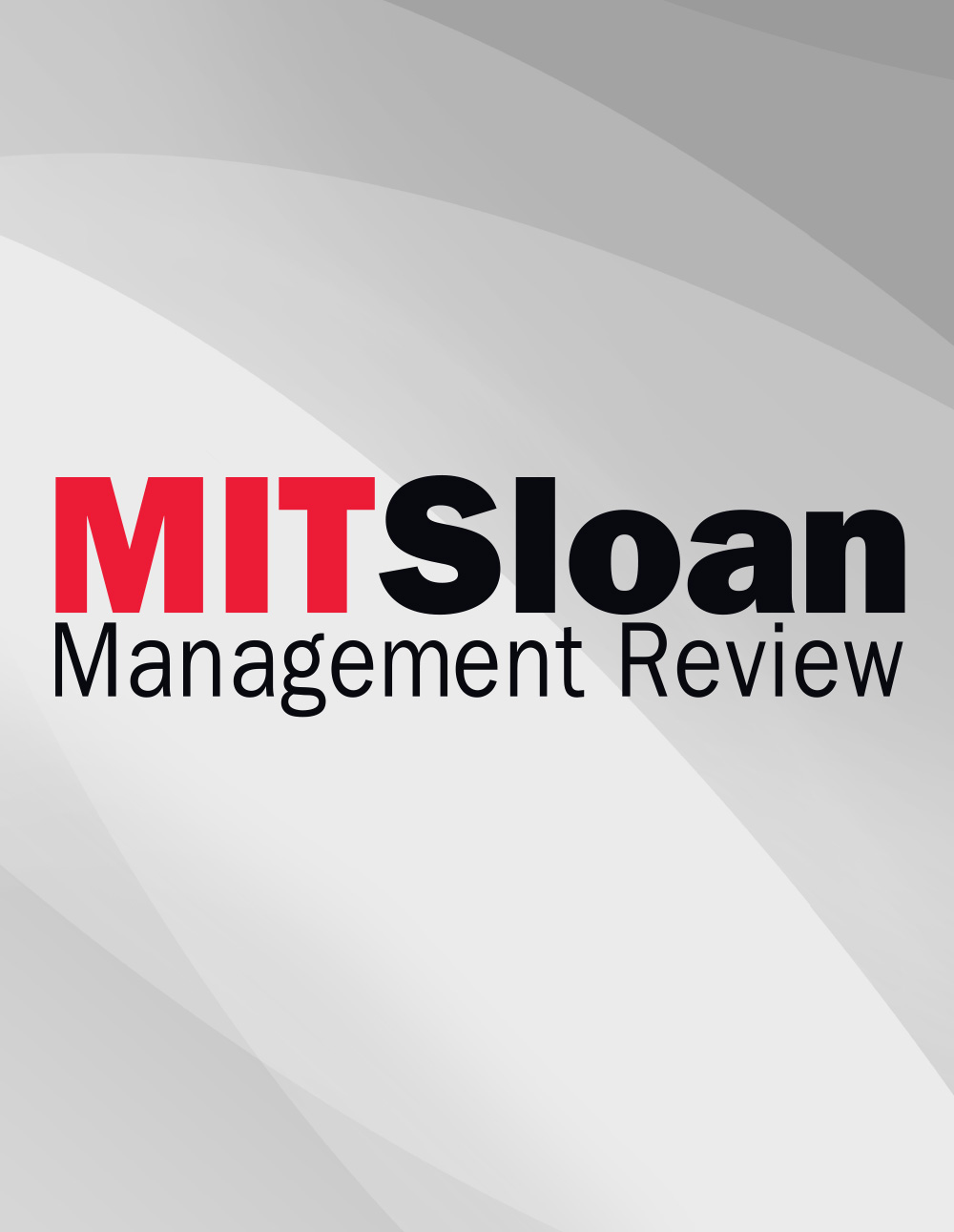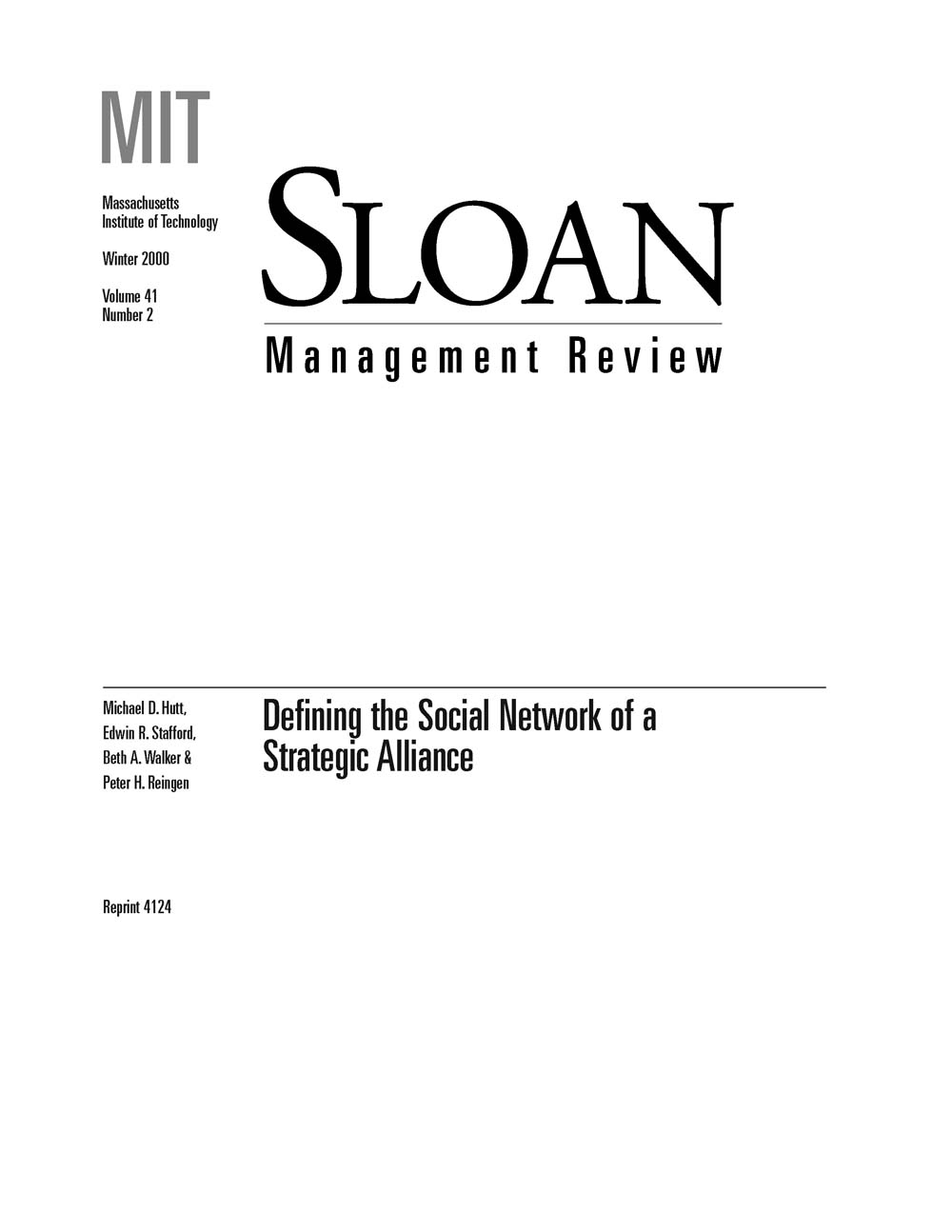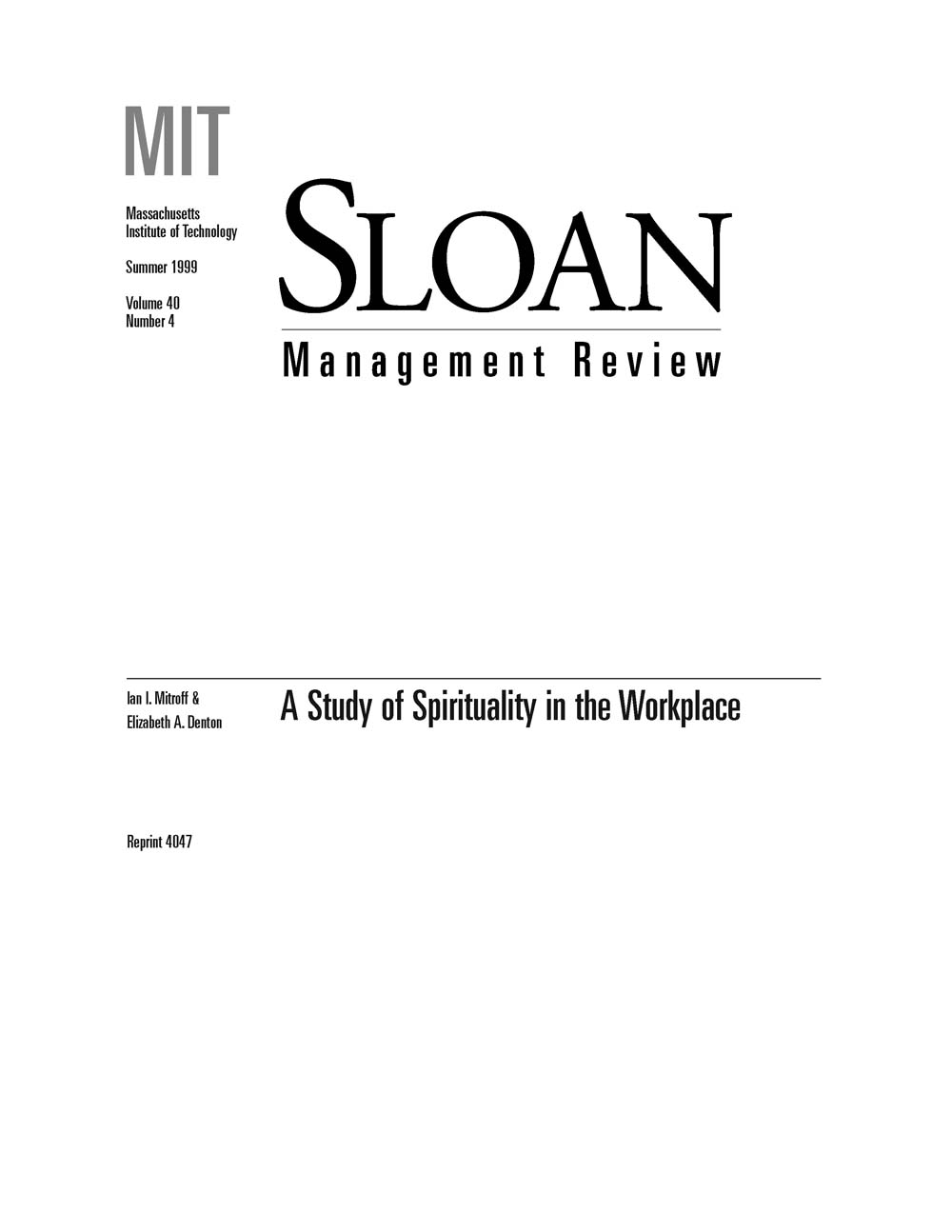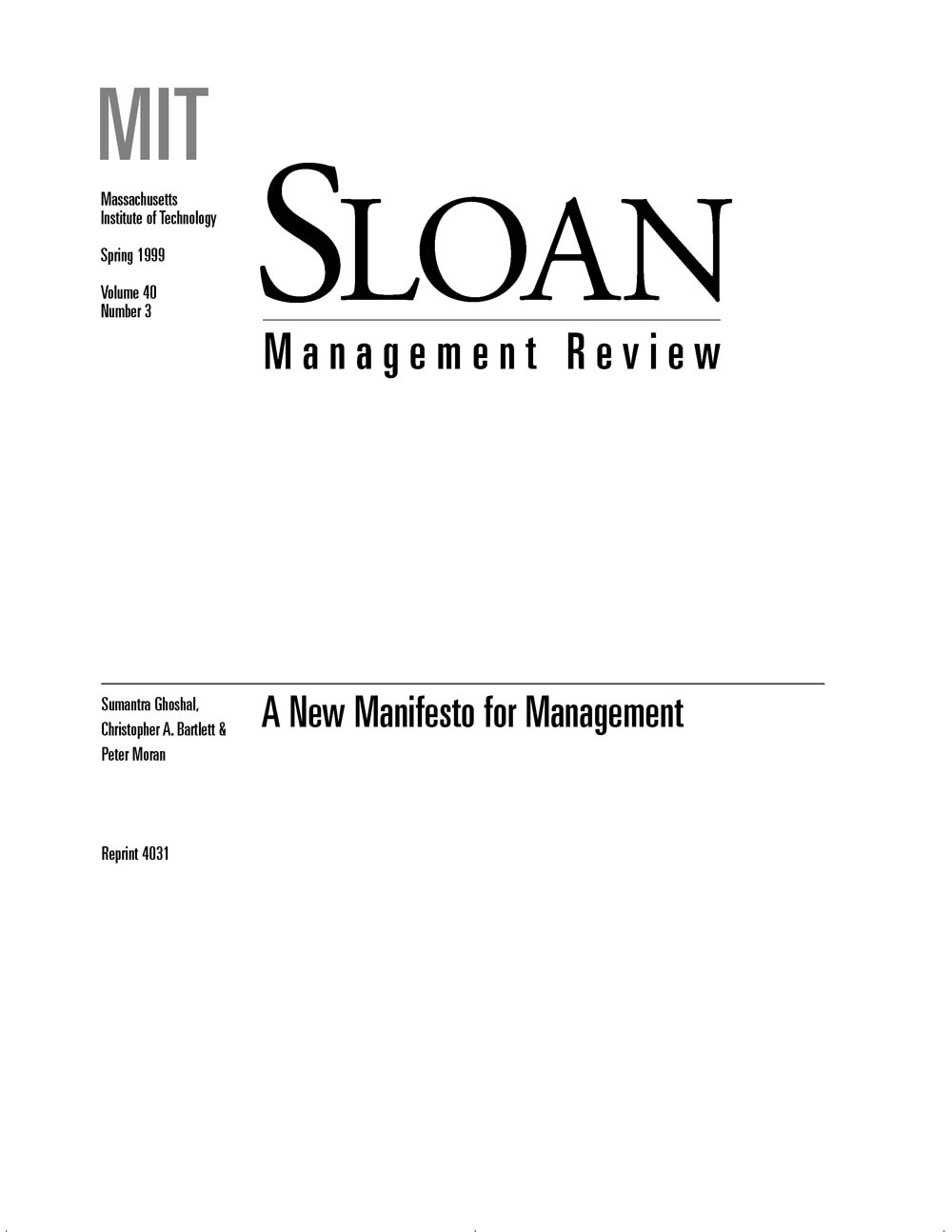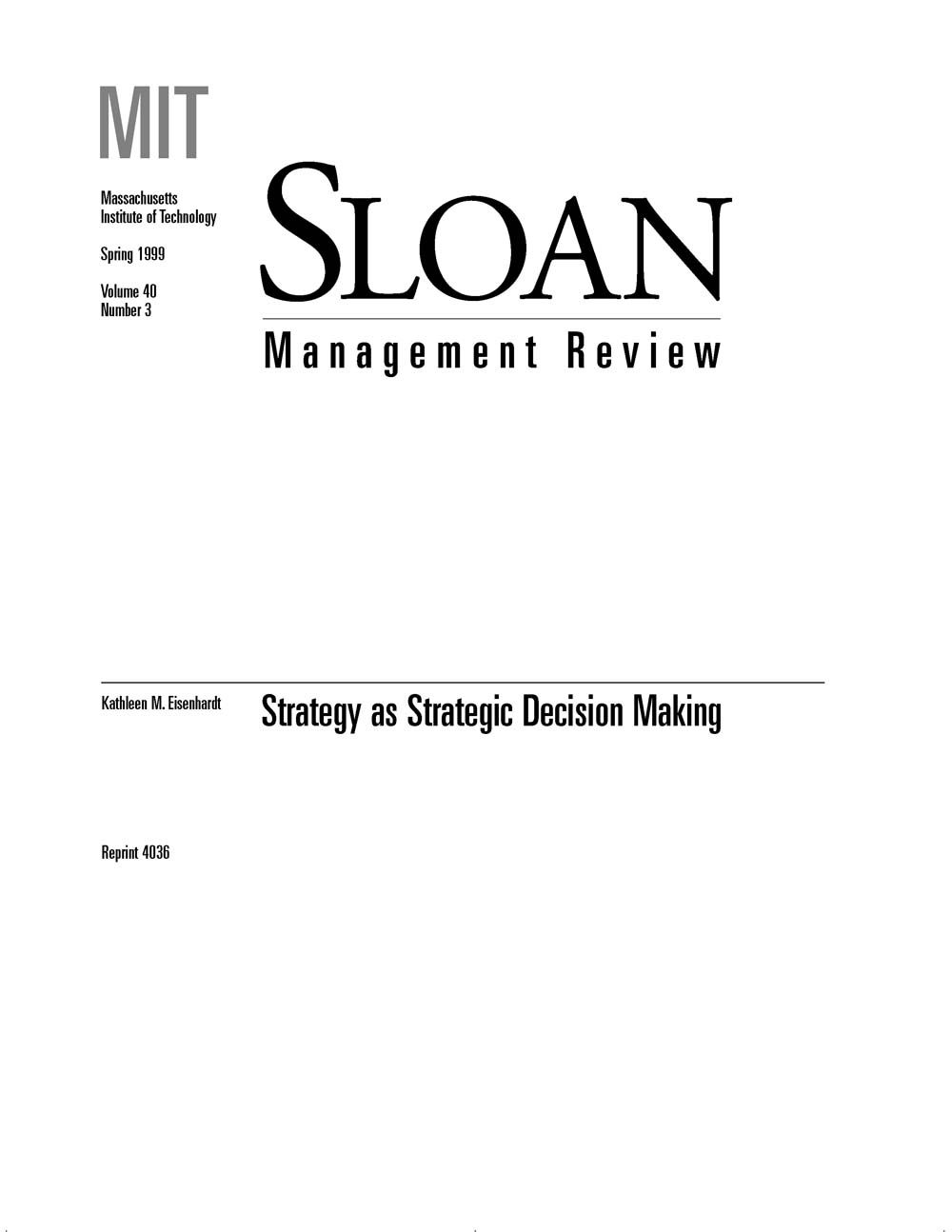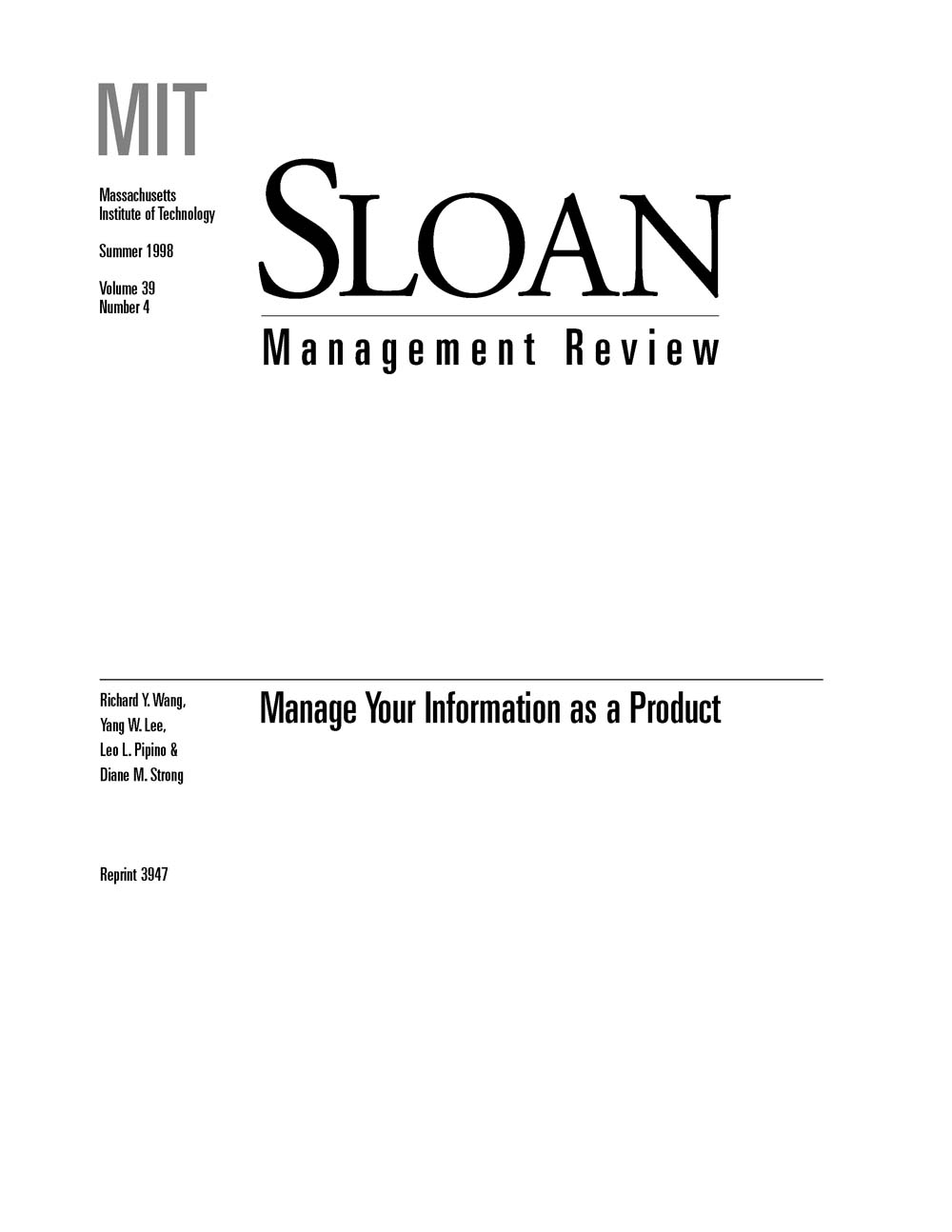Ongoing innovation is essential for the enduring success of any company in a competitive industry. Innovation comes in two basic flavors: product innovation and business innovation (that is, process and marketing innovation). In technology-driven industries, the primary source of customer value shifts over time from the first to the second as technologies mature and the customer base becomes more mainstream. If technology-driven companies are to make the necessary shift to business innovation, they cannot avoid significant changes in company culture. Waiting until crisis strikes is dangerous. But many leaders avoid addressing cultural challenges early enough because they are uncomfortable with the invisible, difficult-to-measure nature of culture and its stubborn resistance to quick fixes. Early high-tech leaders must inevitably evolve their underlying cultural bias as the driving technology in their industry moves through the creation, transition and commoditization stages of development. Cultural change often requires managers to be jolted out of their comfortable grooves by a disaster. Premeditated change is preferable, but it takes courage and foresight. For the courageous manager, the author outlines ways to proactively guide the development of a company’s culture from one best suited for early entrepreneurship to one capable of enduring industry leadership.
Workplace, Teams, & Culture P. 9
Page 20 of 21
-
Confronting the Limits of Networks
Some business builders in the Internet era have blindly focused on “getting big fast” in the mistaken belief that Metcalfe’s Law applies ad infinitum. The value of a network, in fact, does not increase forever, but there are ways to counteract the forces that put the brakes on network effects.” Around 1980 Robert Metcalfe, the inventor of the Ethernet standard and founder of 3Com, observed that the value of a network increases in proportion to the square of the number of people using it. This observation came to be known as Metcalfe’s Law. It was similar to an idea developed by economists about network effects” & #8212; meaning that some resources become more valuable to a person using them according to the number of other people also using them. At the dawn of the Internet era, network effects became the Holy Grail for many business builders, who wanted to “get big fast” in order to exploit them before the competition did. But Metcalfe’s Law doesn’t always hold, say Harvard Business School professor Andrew McAfee and consultant Fran ois-Xavier Oliveau. As networks become very large, they can fall prey to saturation, cacophony, contamination, clustering and high search costs. Those phenomena mean that larger networks can, in some cases, have less value than smaller ones. The authors have identified several strategies that network builders can employ to maintain network effects or limit their decline. When followed properly, these strategies are more effective than a blind, bigger-is-better approach in which network builders rush to sign up as many users as quickly as possible.
-
Six Myths About Informal Networks -- and How To Overcome Them
Over the past couple of decades, management innovations have pushed companies toward the ideal of the “boundaryless” organization. As a result of these changes, formal reporting structures and detailed work processes have a much diminished role in the way important work is accomplished. Instead, informal networks of employees are increasingly at the forefront, and the general health and “connectivity” of these groups can have a significant impact on strategy execution and organizational effectiveness. Many corporate leaders intuitively understand this, but few spend any real time assessing or supporting informal networks. And because they do not receive adequate resources or executive attention, these groups are often fragmented, and their efforts are often disrupted by management practices or organizational design principles that are biased in favor of task specialization and individual rather than collaborative endeavors. The authors initiated a research program two years ago to determine how organizations can better support work occurring in and through informal networks of employees; they assessed more than 40 networks in 23 organizations. They discovered in all cases that the networks provided strategic and operational benefits by enabling members to collaborate effectively; they also found that managers, if they truly wanted to assist these groups, had to overcome six myths about how networks operate. In this article, the authors explain the six myths and why they are harmful; in place of these assumptions, they offer reality checks that can be implemented to help networks become more effective. Senior managers who can separate myth from reality, and act accordingly, stand a much better chance of fostering the growth and success of these increasingly important organizational structures.
-
The Comparative Advantage of X-Teams
Traditional teams are not faring well in today’s rapidly changing business environment. Even when they establish clear roles and responsibilities, build trust among members and define goals according to the book, their projects often fail or get axed. Three MIT Sloan School researchers think they have found the reason: Traditional teams are too inwardly focused and lack flexibility. Traditional team-building activities are still important, they contend, but only when combined with a greater awareness of external stakeholders and information sources. Fortunately, a new, externally focused team has arisen: the X-team. The authors detail the high levels of performance that X-teams are seeing. And they explain how managers in a wide variety of industries and functions can establish the organizational structures that support such teams. The researchers outline the five components of X-teams they have studied: external activity, extensive ties both inside the larger organization and outside the company, expandable tiers or kinds of responsibility, flexible membership (switching roles, moving in and out of the team as needed) and execution mechanisms that facilitate getting the job done. The results are impressive. One observed X-team greatly improved the dispersal of innovation throughout its organization. X-teams in sales were seen to bring in more revenue. Drug-development teams were more adept at drawing in external technology. Product-development teams were more innovative than traditional teams & #8212; and more often on time and on budget. Managers that recognize their own company in the new, flatter organizational structures, the increasing interdependence of tasks and teams, the constant updating of information and the overall complexity of work should consider creating an environment for successful X-teams.
-
Defining the Social Network of a Strategic Alliance
Strategic alliances are assuming increasing prominence in the strategy of leading firms, large and small. Yet many alliances fail to meet expectations because little attention is given to nurturing the close working relationships and interpersonal connections that unite the partnering organizations. This case study follows the strategic alliance between two Fortune 500 firms (referred to as Alpha Communications and Omega Financial Services) as they developed a cobranded product. It explores the social architecture of the alliance and identifies the communication patterns that united the participants & #8212; and the beliefs that divided them. The researchers gathered data from the entire network of alliance participants, including the core team and a cadre of senior executives in the two firms. The result is a vivid and comprehensive portrait of the intricate web of relationships that formed in this alliance and the flow of communications within and across the partnering organizations. The interviews in the study revealed, for example, that fears of ulterior motives preoccupied managers on both sides, leading to a lack of trust. There was also a perceived imbalance in the degree of importance that each partner assigned to the alliance. One appointed senior managers, the other lower level managers, which led to significant pacing issues. Although managers in both firms agreed that the alliance made sense, inattention to the inner workings revealed bothersome incompatibilities. The firms’ different personnel structures also contributed to high levels of frustration. Omega used a centralized approach to control the outward flow of information, whereas Alpha used a decentralized approach. The researchers’ findings suggest that positive personal connections are crucial to the success of a partnership. Initial negotiations and senior management advocacy set the tone for the alliance, galvanizing support and promoting effective interpersonal ties. A well-integrated communication and work-flow network is required within and across the firms, so firms must carefully select team members who will match in rank and specialization those from the partnering organization. Regularly auditing the evolving ties between the organizations is valuable in gauging alliance health.
-
A Study of Spirituality in the Workplace
What do managers and executives believe and feel about workplace spirituality or assessments of its purported benefits? In this article, the authors present the results of a two-year empirical study based on face-to-face interviews and questionnaires. Participants differentiated strongly between religion and spirituality, viewing religion as a highly inappropriate form of expression and spirituality as a highly appropriate subject for the workplace. Most believed strongly that organizations must harness the immense spiritual energy within each person in order to produce world-class products and services. Meaning and purpose on the job are imparted by (ranked from highest to lowest in importance): (1) "the ability to realize my full potential as a person"; (2) being associated with a good organization or an ethical organization; (3) interesting work; (4) making money; (5) having good colleagues and serving humankind; (6) service to future generations; and (7) "service to my immediate community." Beyond a certain threshold, the authors point out, pay ceases to be the most important factor in work life, and higher needs prevail; the desire for "self-actualization" becomes paramount. The authors observed five basic designs or models in which organizations are religious or spiritual: -- The religious-based organization may be positive toward religion and spirituality or positive toward religion and negative toward spirituality. -- The evolutionary organization begins as strongly associated or identified with a particular religion and moves toward a more ecumenical position. -- The recovering organization adopts the principles of Alcoholics Anonymous as a way to foster spirituality. -- The socially responsible organization is led by someone guided by strong spiritual principles or values that are applied directly to the business for the betterment of society. -- The values-based organization is guided by general philosophical principles or values that are not aligned or associated with a particular religion or even with spirituality. -- Characterized by the underlying principle of hope, the models appear to have been precipitated by a critical event that caused intense difficulties for the company founders, heads, or the entire organization. All incorporate a principle or mechanism for limiting greed -- both the unlimited accumulation of money and the unrestrained pursuit of power. With a few notable exceptions, people who consider their organizations as being spiritual also see them as better than their less spiritual counterparts.
-
A New Manifesto for Management
The corporation has emerged as perhaps the most powerful social and economic institution of modern society. Yet, corporations and their managers suffer from a profound social ambivalence. Believing this to be symptomatic of the unrealistically pessimistic assumptions that underlie current management doctrine, Ghoshal et al. encourage managers to replace the narrow economic assumptions of the past and recognize that: -- Modern societies are not market economies; they are organizational economies in which companies are the chief actors in creating value and advancing economic progress. -- The growth of firms and, therefore, economies is primarily dependent on the quality of their management. -- The foundation of a firm's activity is a new "moral contract" with employees and society, replacing paternalistic exploitation and value appropriation with employability and value creation in a relationship of shared destiny. In the 1980s, managers concentrated on enhancing competitiveness by improving their operating efficiencies. They cut costs, eliminated waste, downsized, and outsourced. They extracted value -- as reflected in shareholder returns -- but at what price? In contrast, firms that seem to continuously proliferate new products and technologies (for example, HP, 3M, Disney, and Microsoft) have never accepted this logic of auto-dismemberment. They have escaped what the authors term "the deadly pincer of dominant theory and practice": an almost exclusive focus on appropriation and control. A different management model is now taking shape, based on a better understanding of individual and corporate motivation. As companies switch their focus from value appropriation to value creation, facilitating cooperation among people takes precedence over enforcing compliance, and initiative is valued more than obedience. The manager's primary tasks become embedding trust, leading change, and establishing a sense of purpose within the company that allows strategy to emerge from within the organization, from the energy and alignment created by that sense of purpose. The core of the managerial role gives way to the "three Ps": purpose, process, and people -- replacing the traditional "strategy-structure-systems" trilogy that worked for companies in the past.
-
Strategy as Strategic Decision Making
In rapidly changing markets, decisions that changeåÊa company's direction arise much more often.
-
Manage Your Information as a Product
Companies must understand their customers’ needs and appoint a manager to oversee the production of high-quality information.



